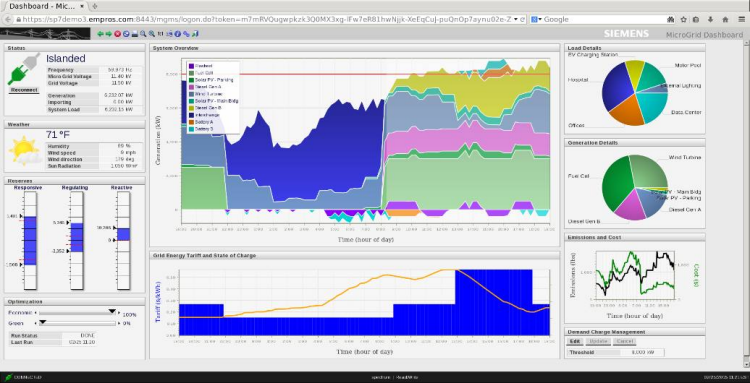1. EXECUTIVE SUMMARY
- CVSS v3 8.2
- ATTENTION: Low Attack Complexity
- Vendor: Siemens
- Equipment: Spectrum Power 7
- Vulnerability: Incorrect Permission Assignment for Critical Resource
2. RISK EVALUATION
Successful exploitation of this vulnerability could allow a local attacker to inject arbitrary code to the update script and escalate privileges.
3. TECHNICAL DETAILS
3.1 AFFECTED PRODUCTS
The following products of Siemens, are affected:
- Spectrum Power 7: versions prior to V23Q3
3.2 Vulnerability Overview
3.2.1 Incorrect Permission Assignment for Critical Resource CWE-732
The affected product assigns improper access rights to the update script. This could allow an authenticated local attacker to inject arbitrary code and escalate privileges.
CVE-2023-38557 has been assigned to this vulnerability. A CVSS v3 base score of 8.2 has been calculated; the CVSS vector string is (CVSS:3.1/AV:L/AC:L/PR:H/UI:N/S:C/C:H/I:H/A:H).
3.3 BACKGROUND
- CRITICAL INFRASTRUCTURE SECTORS: Energy
- COUNTRIES/AREAS DEPLOYED: Worldwide
- COMPANY HEADQUARTERS LOCATION: Germany
3.4 RESEARCHER
Tyler Webb from Dragos Inc. reported this vulnerability to Siemens and CISA.
4. MITIGATIONS
Siemens has released an update for Spectrum Power 7 (V23Q3) and recommends to update to the latest version. For any versions of Spectrum Power 7 prior to V23Q3, please contact Siemens customer support
Operators of critical power systems (e.g. TSOs or DSOs) worldwide are usually required by regulations to build resilience into the power grids by applying multi-level redundant secondary protection schemes. It is therefore recommended that the operators check whether appropriate resilient protection measures are in place. The risk of cyber incidents impacting the grid’s reliability can thus be minimized by virtue of the grid design. Siemens strongly recommends applying the provided security updates using the corresponding tooling and documented procedures made available with the product. If supported by the product, an automated means to apply the security updates across multiple product instances may be used. Siemens strongly recommends prior validation of any security update before being applied, and supervision by trained staff of the update process in the target environment. As a general security measure Siemens strongly recommends to protect network access with appropriate mechanisms (e.g. firewalls, segmentation, VPN). It is advised to configure the environment according to Siemens’ operational guidelines in order to run the devices in a protected IT environment.
For more information see the associated Siemens security advisory SSA-357182 in HTML and CSAF.
CISA recommends users take defensive measures to minimize the risk of exploitation of this vulnerability. CISA reminds organizations to perform proper impact analysis and risk assessment prior to deploying defensive measures.
CISA also provides a section for control systems security recommended practices on the ICS webpage on cisa.gov. Several CISA products detailing cyber defense best practices are available for reading and download, including Improving Industrial Control Systems Cybersecurity with Defense-in-Depth Strategies.
CISA encourages organizations to implement recommended cybersecurity strategies for proactive defense of ICS assets.
Additional mitigation guidance and recommended practices are publicly available on the ICS webpage at cisa.gov in the technical information paper, ICS-TIP-12-146-01B–Targeted Cyber Intrusion Detection and Mitigation Strategies.
Organizations observing suspected malicious activity should follow established internal procedures and report findings to CISA for tracking and correlation against other incidents.
CISA also recommends users take the following measures to protect themselves from social engineering attacks:
- Do not click web links or open attachments in unsolicited email messages.
- Refer to Recognizing and Avoiding Email Scams for more information on avoiding email scams.
- Refer to Avoiding Social Engineering and Phishing Attacks for more information on social engineering attacks.
No known public exploitation specifically targeting this vulnerability has been reported to CISA at this time. This vulnerability is not exploitable remotely.
Source:
https://www.cisa.gov/news-events/ics-advisories/icsa-23-264-02
